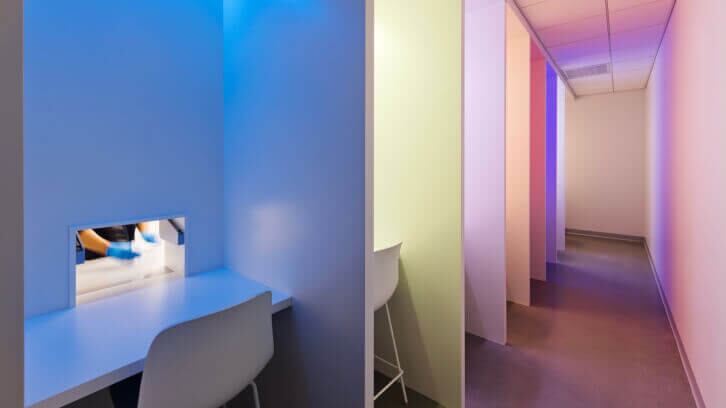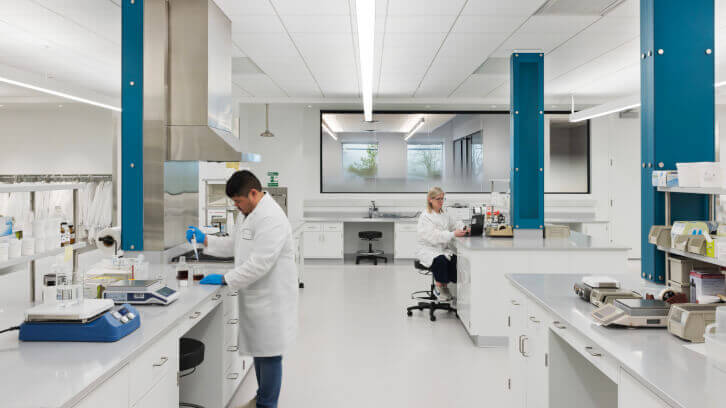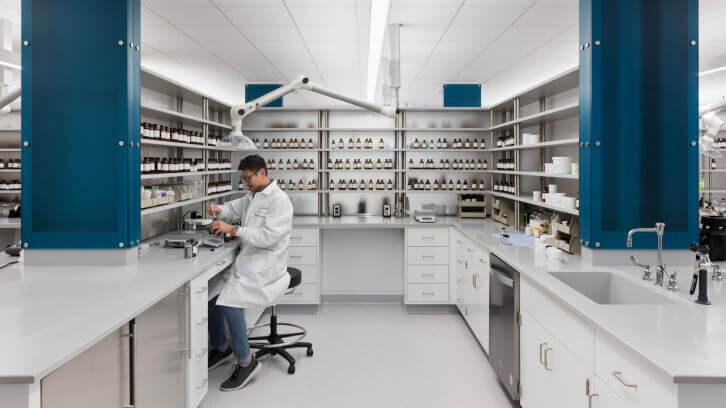Virginia Dare began constructing its Carteret manufacturing facility in 2018 and started flavor and extract production the following year. The company made its full relocation from Brooklyn in 2020. The relocation moved nearly 200 employees, reflecting a 90% retention rate, according to Virginia Dare's Vice President of Business and Product Development Mike Springsteen.
“Now we have much expanded capabilities in terms of the types of products that we can produce here, as well as spaces … for product development work, ideation and tasting, as well as working side by side and at the bench,” Howard Smith, CEO, Virginia Dare, told FoodNavigator-USA during the opening earlier this month.

The company’s facility prioritizes customer engagement through technical innovation. Featuring a sensory prep kitchen, tasting booth and specialized labs for gummies and beverages, the facility is tailored to collaborative product development.
The addition of evaluation labs for flavor creation highlights the company's commitment to replicating customer methods and preferences. The new headquarters also features a pilot plant dedicated to scaling up flavor creations, providing Virginia Dare with flexibility in product development.
“From the production standpoint … we have a brand-new facility [that is] designed with maximum efficiency” around material storage, product processing, quality control and shipping for different kinds of food and beverage products, Smith said.
“From the production standpoint … we have a brand-new facility [that is] designed with maximum efficiency” around material storage, product processing, quality control and shipping for different kinds of food and beverage products, Smith said.
He added that the facility allows for “a new flow” of all raw materials from processing to finished goods and that the company can combine “our product development and production,” in adjacent spaces.
Beyond its Carteret headquarters, Virginia Dare has established a technical center in Pasadena, Calif., catering to West Coast customers.
Vanilla expertise, sustainability initiatives
Virginia Dare’s dedicated vanilla team also will have more evaluation resources. The company has focused on vanilla since 1923 with a processing facility in Madagascar that allows it to process and export cured vanilla beans to the Carteret facility.
By prioritizing a more equitable economy for smallholder vanilla farmers, Smith said that Virginia Dare’s presence in Madagascar is “extremely engaged with the local community there and working day in and day out to improve their livelihood, their product … and their lives,” including providing farmers with training to cure their own vanilla beans, which are worth more than green vanilla beans.
“It is an art and a science and a skill set that most of the farmers do not have, but … it helps them,” he added.
Leveraging flavor technologies in functional, non-alcoholic beverages

The facility's layout is conducive to product development, with specialized spaces designed to streamline the creation and refinement of innovative beverage solutions, said Nicole Staniec, Virginia Dare’s vice president of beverage product.
Staniec highlighted the company's expertise in flavor masking and modification, essential for formulating functional and non-alcoholic beverages.
“We have a long history, a very large library of masking and modifying flavors. So, when those active ingredients present taste challenges, we have a nice toolbox to choose from and I would say we neutralize the canvas for the beverages so that the characterizing flavors can go on top and can really be allowed to shine through with all … of their taste delights,” she told FoodNavigator-USA.
In the burgeoning mocktail market, Staniec emphasized the importance of balancing flavor authenticity with consumer preferences, particularly for individuals in recovery from alcoholism.
“Alcohol is a very complex sensorial experience. So, if you are really trying to recreate that full experience, it is a challenge. … There is some thought – depending on why the mocktail is being created – to be mindful to not add too much of the alcoholic note to the mocktail … Some of the brands are very mindful of not making the product taste too much like the alcohol to trigger a relapse,” she said.
She added that in the mocktail space, looking at demographics is critical in determining “whether we actually build up that alcoholic node,” like adding juniper notes to a gin mocktail for instance, “or just go with the other characteristics that might be part of a cocktail,” like a fruit-botanical combination “to give another kind of interesting twist.”
While flavor varieties are across the board for beverages, Staniec explained that natural flavors are the most popular, in addition to natural sweeteners, although “there is still plenty of room for artificial or synthetic high intensity sweeteners.”
She continued, “We are seeing a big usage of stevia and its derivatives, but also some stevia-monk fruit combinations. No one high intensity sweetener, whether it is synthetic or natural, tastes exactly like sugar. So, it is typically looking at a holistic formulation – a blend of sweeteners may more closely mimic sugar than any one alone.”
Often, the use of high intensity sweeteners creates unwanted notes. Virginia Dare’s capabilities would offer a masking technology “to cover some of those off notes and some of the baggage that comes along with [it]” or a modifying technology to “round out the profile of the flavor, the sweetness and the sugar,” she said.

